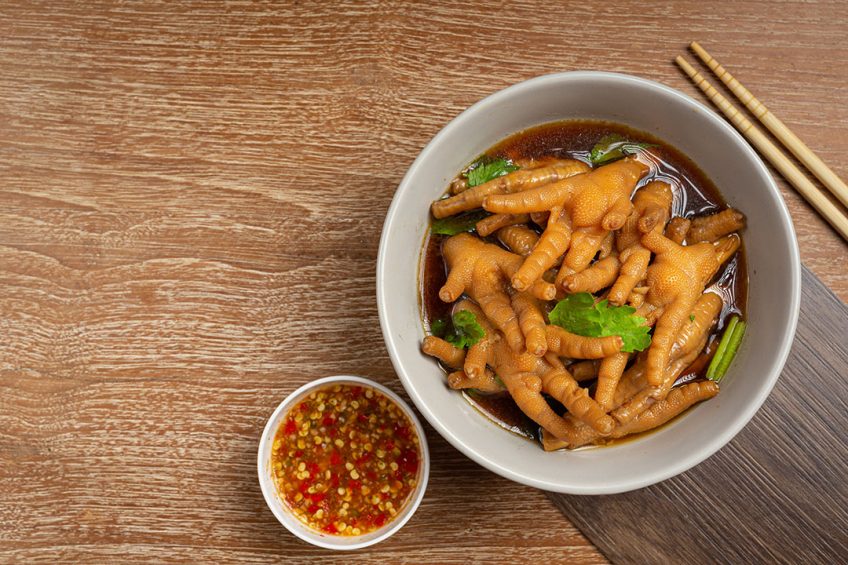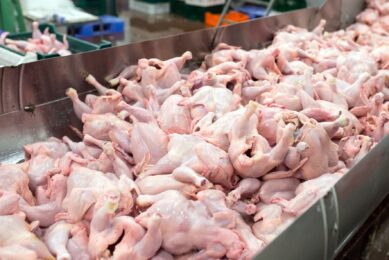Russian chicken exports to China surges

Steady demand for chicken meat, the availability of feed from an ample grain crop and growing imports of soybean meal will all support production growth in Russia in 2021.
In 2020, exports increased 22% driven by entry into the Chinese market. Meanwhile, domestic consumption is forecast flat while difficult economic conditions continue and competition with pork intensifies.
Steady demand for chicken meat during the Covid-triggered recession, availability of feed from the strong grain crop in Russia and growing imports of soybean meal will support marginal production growth to 4.725 mmt in 2021. The 2020 production forecast is revised to 4.715 mmt, which is 1% growth year-on-year from 2019. Domestic consumption of chicken meat is stable despite increased competition with pork. Quarantine measures and travel restrictions due to Covid-19 supported stable demand for chicken meat in retail, especially for the less-expensive whole chickens. In addition, demand from China, a newly opened export market, created room in the saturated market and stimulated additional output.
The share of chicken in total poultry meat production is approximately 94% (turkey accounts for 5.8%, and other poultry (ducks, geese, quail) accounts for 0.2%).
Quotas on grain exports
Locally harvested wheat, barley, corn, sunflower and soybean meals account for a major part of broiler rations in Russia and are also the country’s export commodities. In March 2020, a quota was imposed limiting exports of wheat, barley, corn, and rye to 7 mmt. Explained as food security measures during the Covid-19 pandemic, the quota was in place from 1 April until 30 June 2020, though Agriculture Minister Dmitry Patrushev said the ministry wants the quota mechanism to become permanent.
Grain exports will most likely be subject to quotas from January to June 2021 to guarantee sufficient domestic supply for the production of feeds.
 Russia embraces new trends
Russia embraces new trends
Russian farmers find themselves in a new reality as over the past few years, the country’s environmental-protecting organisations have become a force to be reckoned with.
Soybeans as a feed base
Russia used 5.5 mmt of soybeans, including 2.070 mmt of imported beans in 2019. Imports accounted for 37.6% of the total national consumption of soybeans in 2019. The Federal Customs Service of Russia reports a 30% increase of soybean meal imports in the period January to August 2020. Despite the expected growth of domestic production in 2020-2021, prices on imported soybeans and soybean meals will remain a significant influence on poultry feeds. Average producer prices of compound feeds for poultry was 19,534 Roubles (US$ 253.75) per mt in June 2020, a 4.8% increase from a year earlier.
Stable demand for the least expensive protein
Purchasing power of Russian consumers has been falling since 2014, further exacerbated by Covid-19-related business disruptions and containment measures. Real disposable income fell 8% in the second quarter of 2020, and is forecast to fall further, meaning disposable incomes in Russia will be far below wat they were in 2014. As the economic outlook remains unfavourable in the mid-term, demand for the least expensive protein in the market will remain stable.
Domestic consumption of chicken meat in 2021 is forecast at 4.715 mmt, unchanged from 2020. Growth of chicken consumption is not expected due to increased competition from pork. Consumer prices for pork in 2020 were on average 4.5% lower than in comparable months of 2019 due to abundant pork supply.
Whole chickens are the least expensive and the most desirable during the times of crisis. Notably, retail prices for whole chicken remain 2-3% below 2019 levels due to abundant supply. Meanwhile, the prices for chicken quarters are approximately 1% higher, due to interest in chicken legs and drumsticks from exporters.
 Bioprotein production is perking up in Russia
Bioprotein production is perking up in Russia
Russia may overcome a shortage of protein on its domestic feed market thanks to several independent projects working on bioprotein production.
Chicken meat imports to decline
Imports in 2021 are forecast to decline to 210,000 mt from 220,000 mt expected in 2020. Belarus and Brazil remain major suppliers of chicken meat to Russia, accounting for 94% of Russia’s chicken imports. Other key suppliers are Argentina and Kazakhstan. Brazil’s exports to Russia are comprised primarily of frozen boneless chicken meat (52%) and frozen chicken quarters (35%), and Belarus’ exports are primarily chilled chicken meat (76%). The market remains closed for the US and some other key suppliers until the end of 2020 due to counter sanctions that were introduced in 2014.
China becomes major destination
A total of 220,000 mt of chicken meat exports are forecast in 2021, an increase from 215,000 mt expected in 2020. Russia exported 111,439 mt of chicken meat in January-June 2020, which is 58,8% higher than the same months of 2019. In the first half of 2020, China quickly became the major destination for chicken exports from Russia and accounted for 62% of the country’s exports. During this time, 76,753 mt of chicken meat was shipped to China, including 42,119 mt of frozen chicken claws, 25,564 mt of frozen mid-joint chicken wings, 4,637 mt of frozen chicken legs/drumsticks and 3,217 mt of frozen chicken thighs.
 Bioprinting chicken nuggets in Russia
Bioprinting chicken nuggets in Russia
By the end of 2020, KFC and Moscow-based 3D bioprinting solutions want to create chicken nuggets by means of bioprinting technology.
Other exports
Russia continues shipping chicken to the Donetsk and Luhansk regions of Ukraine, which was the largest export market in 2017-2019 with annual shipments of approximately 45,000 mt. Exports to this market are expected to remain stable. Russia’s exports to its partners within the EAEU increased 26% in the first half of 2020 and totalled 54,197 mt of chicken in 2019 when destinations were Kazakhstan (24,638 mt), Kyrgyzstan (4,488 mt), Armenia (2,426 mt) and Belarus (582 mt).
The information in this article has been extracted from a USDA GAINS report.
Join 31,000+ subscribers
Subscribe to our newsletter to stay updated about all the need-to-know content in the poultry sector, three times a week. Beheer
Beheer











 WP Admin
WP Admin  Bewerk bericht
Bewerk bericht